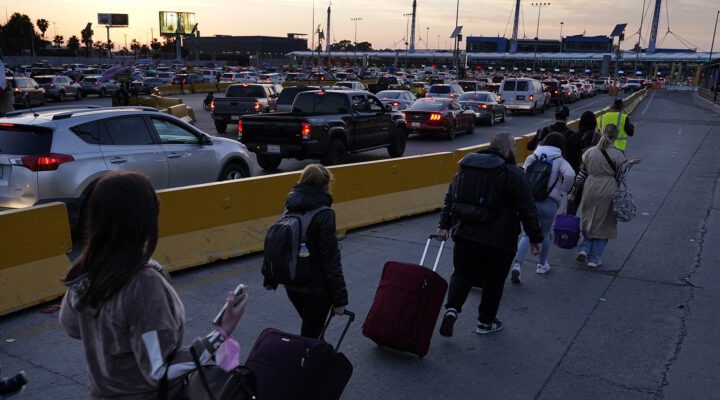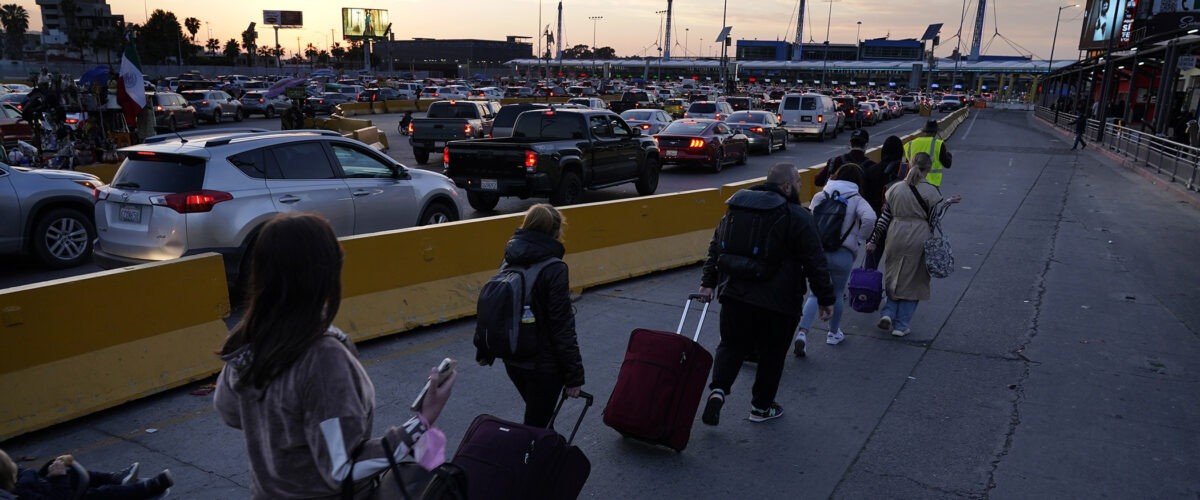A small-but-determined group of Ukrainian asylum seekers has discovered the quickest route to safety in the United States, at least currently, runs through Mexico, immigrant rights advocates say.
A diplomatic arrangement predating Russia’s invasion of Ukraine enables Mexico to fast-track Ukrainian passport holders into the country and to the American border, where the majority are gaining entry into the U.S. within three to four days, said Danilo Zak, policy and advocacy manager for the National Immigration Forum.

Danilo Zak
Ukrainians using that route are being granted humanitarian parole in the U.S., which exempts them from deportation for a year and allows them to seek authorization to find employment, he explained.
It’s a highly attractive option for Ukrainians who have family or other connections in the U.S. and who can afford the airfare from Europe and hotel or other accommodations in Mexico while their cases are processed. So far, nearly 10,000 Ukrainians have appeared at America’s Southern border. “They fly into Mexico City, take a bus to Tijuana and apply for asylum at the border,” Zak explained.
The Biden administration pledged in March to admit 100,000 Ukrainian refugees but did so without announcing a timeline or process for their entrance into the U.S. Traditional avenues of seeking refuge, including obtaining American tourist visas or seeking asylum directly from Europe, can take up to a decade to complete, Zak said.
“If I were recommending a path to Ukrainians right now, it would probably be that one (through Mexico) because the majority of them are getting in and all these other pathways are so backlogged and sluggish,” he added.
The 9,600-plus Ukrainians processed at the border during the past two months represent a drop in the bucket of displaced persons since just a few weeks before Russia’s Feb. 24 invasion. According to the United Nations, more than 4.7 million Ukrainians have escaped the country in that time, mostly to neighboring countries including Poland, Romania and Hungary. Others have made it to longer-term safety in more distant European countries.
But it has been slow going for those seeking asylum in the U.S. through official programs, with only 12 being allowed in during March, Zak said. “So, it makes sense to come through Mexico. One way to potentially address this is to create some expedited refugee pathway or a special parole program to fly them in.”

Ukrainian refugees speak with a United States Customs and Border Patrol official as they prepare to cross the border, Monday, April 4, 2022, in Tijuana, Mexico. About 200 to 300 Ukrainians were being admitted daily at the San Ysidro crossing that week, with hundreds more arriving in Tijuana.. (AP Photo/Gregory Bull)
CNN reported April 12 that the White House plans a new parole program for Ukrainians focused on family reunification, a process similar to that used for Afghan refugees. But scheduling uncertainties around the proposal make the path through Mexico an even more attractive approach. Also unclear is if those being admitted from Mexico will count toward the 100,000 the administration has pledged to help.
What is clear is that Ukrainians are having a much smoother and predictable experience at the southern border than many immigrants from Latin America, Haiti and the Middle East. Zak noted that the Europeans have yet to be deported under Title 42, the soon-to-end Trump-era health code policy used to expel tens of thousands of asylum-seeking migrants from other countries.
The parole status being granted to Ukrainians also sets them apart from many other asylum seekers, Zak said. “By letting them in through ports of entry others can’t use and granting them a year without concern for deportation certainly does raise some concerns about disparate treatment.”
Once again, the Ukraine-to-Mexico asylum route also exposes the need for meaningful immigration reform, Migration Policy Institute analyst Julia Gelatt said in a CBS News report.
“The fact that Ukrainians are traveling to Mexico and trying their luck at the U.S.-Mexico border as the fastest option just shows how slow and clogged up our immigration system is,” she said. “We don’t really have a rapid response part of our immigration system that can create pathways for people in an emergency situation.”
Related articles:
End of Title 42 is popular with immigration advocates but not so much with voters
Majorities of all Americans want something Congress refuses to do: Meaningful immigration reform now
This is how quickly someone can become a refugee | Opinion by Samira Izadi Page


